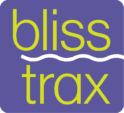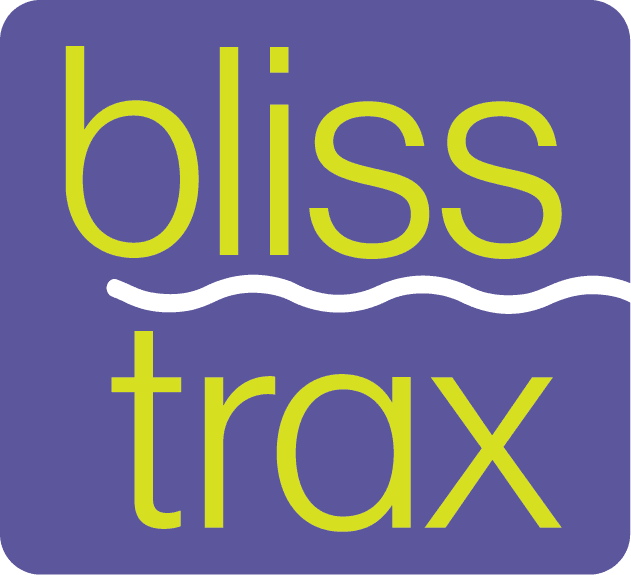Ever wondered how binaural beats can help with relaxation, stress reduction, and even better focus? The science behind it is fascinating. Binaural beats work by influencing your brainwaves, helping your mind reach a more relaxed or focused state. In this article, we’ll explore why binaural beats work and how you can benefit from them. If you’re ready to experience how sound can transform your mental state, check out BlissTrax™ and its unique sound technology.
#1: What Are Binaural Beats?
Binaural beats are a fascinating audio phenomenon that can help your brain reach different mental states. They work by playing two slightly different frequencies in each ear, which your brain processes as a single beat. This effect can influence your brainwaves, guiding you into relaxation, focus, or even sleep.
The Basics of Binaural Beats
Binaural beats occur when you listen to two tones that have slightly different frequencies, with one in each ear. Your brain picks up on the difference between these frequencies and creates a new, third tone called a binaural beat. This process encourages your brain to enter specific states like relaxation or focus, depending on the frequency difference. For example, listening to binaural beats with a frequency difference of 10 Hz might help your brain move into a more relaxed or meditative state.
How They Differ from Regular Music
While music can have a soothing or energizing effect, binaural beats are different because they directly influence brainwaves. Regular music doesn’t involve specific frequency differences that your brain needs to process. Binaural beats use precise, scientifically measured frequencies to guide your brain into specific mental states, which makes them more targeted for purposes like relaxation, sleep, or improved focus.
#2: How Binaural Beats Affect the Brain
Binaural beats affect your brain by encouraging it to follow specific brainwave patterns. This process, known as brainwave entrainment, can help guide your mental state toward relaxation, focus, or even deep sleep depending on the frequency of the beats.
Brainwave Entrainment Explained
Brainwave entrainment happens when external rhythms, like binaural beats, cause your brain to synchronize with those rhythms. When you listen to binaural beats, the difference between the two frequencies creates a steady pulse, and your brain starts to match that rhythm. For example, if you listen to a 7 Hz binaural beat, your brain may start to generate theta waves, which are linked to relaxation and creativity. This process helps your brain naturally shift into the desired state, whether it’s relaxation, focus, or deeper sleep.
Impact on Different Brainwave States
Binaural beats can influence different brainwave states depending on their frequency:
● Delta Waves (0.5 to 4 Hz): These are associated with deep, restorative sleep. Binaural beats in this range help you fall into deep sleep more easily.
● Theta Waves (4 to 8 Hz): Linked to relaxation and light sleep, theta waves are ideal for meditation or unwinding before bed.
● Alpha Waves (8 to 13 Hz): Alpha waves are associated with a calm, yet alert state, making binaural beats in this range useful for reducing stress and promoting focus.
● Beta Waves (13 to 30 Hz): These waves are connected to active thinking and focus. Higher-frequency binaural beats in this range can help enhance concentration and productivity.
Each frequency range affects the brain differently, which is why binaural beats are often used for a variety of purposes, from deep relaxation to heightened concentration.
#3: The Science Behind Binaural Beats
The effectiveness of binaural beats is supported by a growing body of research. Studies show that certain brainwave frequencies can have a positive impact on relaxation, focus, and overall mental well-being, making binaural beats a helpful tool for reducing stress and improving cognitive function.
Research Supporting Binaural Beats
Research into binaural beats has shown promising results for their impact on the brain. Studies suggest that listening to binaural beats can reduce anxiety, improve focus, and even promote better sleep. For example, some studies found that participants who listened to binaural beats before bed experienced deeper, more restful sleep. Other research suggests that binaural beats in the alpha and theta ranges can help lower stress and increase feelings of relaxation. While more research is still needed, many people report positive effects from regular use of binaural beats in their daily routines.
How Brain Frequencies Influence Mood and Focus
The brain operates at different frequencies depending on your mental state. Each frequency is associated with specific moods or levels of focus:
● Low Frequencies (Delta and Theta): These slower brainwaves are linked to relaxation, meditation, and sleep. They are ideal for reducing stress and promoting a calm state of mind.
● Mid Frequencies (Alpha): Alpha waves are associated with a state of relaxed awareness, where you’re calm but still alert. Listening to binaural beats in this range can enhance focus while keeping you stress-free.
● Higher Frequencies (Beta): Beta waves are connected to active thinking, problem-solving, and concentration. Binaural beats in this frequency range can boost cognitive performance, helping with tasks that require attention and mental sharpness.
#4: Common Uses of Binaural Beats
Binaural beats have become popular for their ability to improve mental well-being and enhance cognitive functions. Whether you’re looking to de-stress, relax, or boost productivity, binaural beats can be a helpful tool.
Stress Reduction and Relaxation
One of the most common uses of binaural beats is for stress reduction and relaxation. By listening to beats in the alpha or theta frequency ranges, you can help your brain shift into a more relaxed state. This can lower cortisol levels (a stress hormone), reduce anxiety, and create a sense of calm. Many people use binaural beats at the end of the day to unwind, clear their minds, and prepare for a good night’s sleep. The soothing sound patterns guide the brain toward relaxation, making it easier to let go of the day’s stress.
Enhancing Focus and Creativity
Binaural beats can also be used to enhance focus and creativity, especially when working on tasks that require mental clarity. Beats in the beta frequency range can help stimulate active thinking, concentration, and problem-solving. Meanwhile, theta waves are often associated with creativity, making them ideal for activities like brainstorming or artistic work. Many people find that listening to binaural beats while studying or working allows them to stay more engaged and productive without feeling overwhelmed.
#5: How to Incorporate Binaural Beats into Your Routine
Incorporating binaural beats into your daily routine is simple and can be done during various activities to enhance relaxation, focus, or creativity. By finding the right moments to listen, you can maximize their benefits.
Best Times to Use Binaural Beats
The best time to use binaural beats depends on your goals. If you want to relax or de-stress, listening to alpha or theta frequencies in the evening or before bed can help ease you into a peaceful state. For focus and productivity, beta waves are most effective when used in the morning or during work sessions. Consistency is key, so try to incorporate binaural beats into your day at the same time to help your brain associate them with relaxation or concentration.
Pairing Binaural Beats with Daily Activities
Binaural beats can easily be paired with activities you already do every day. You can listen while working, studying, exercising, or even meditating. For example, you might use beta frequencies while working to stay focused or play theta waves during meditation to deepen your relaxation. Binaural beats can also complement physical activities like yoga, stretching, or walking, helping you feel more grounded and present.
Final Words:
Ready to experience the power of binaural beats yourself?
Start incorporating them into your daily routine with BlissTrax™ and feel the difference in your mood, focus, and relaxation.
Stress less with 30 days of BlissTrax for free:
• Find focus and flow state without closing your eyes to meditate
• Download the BlissTrax app and reduce stress and anxiety today


